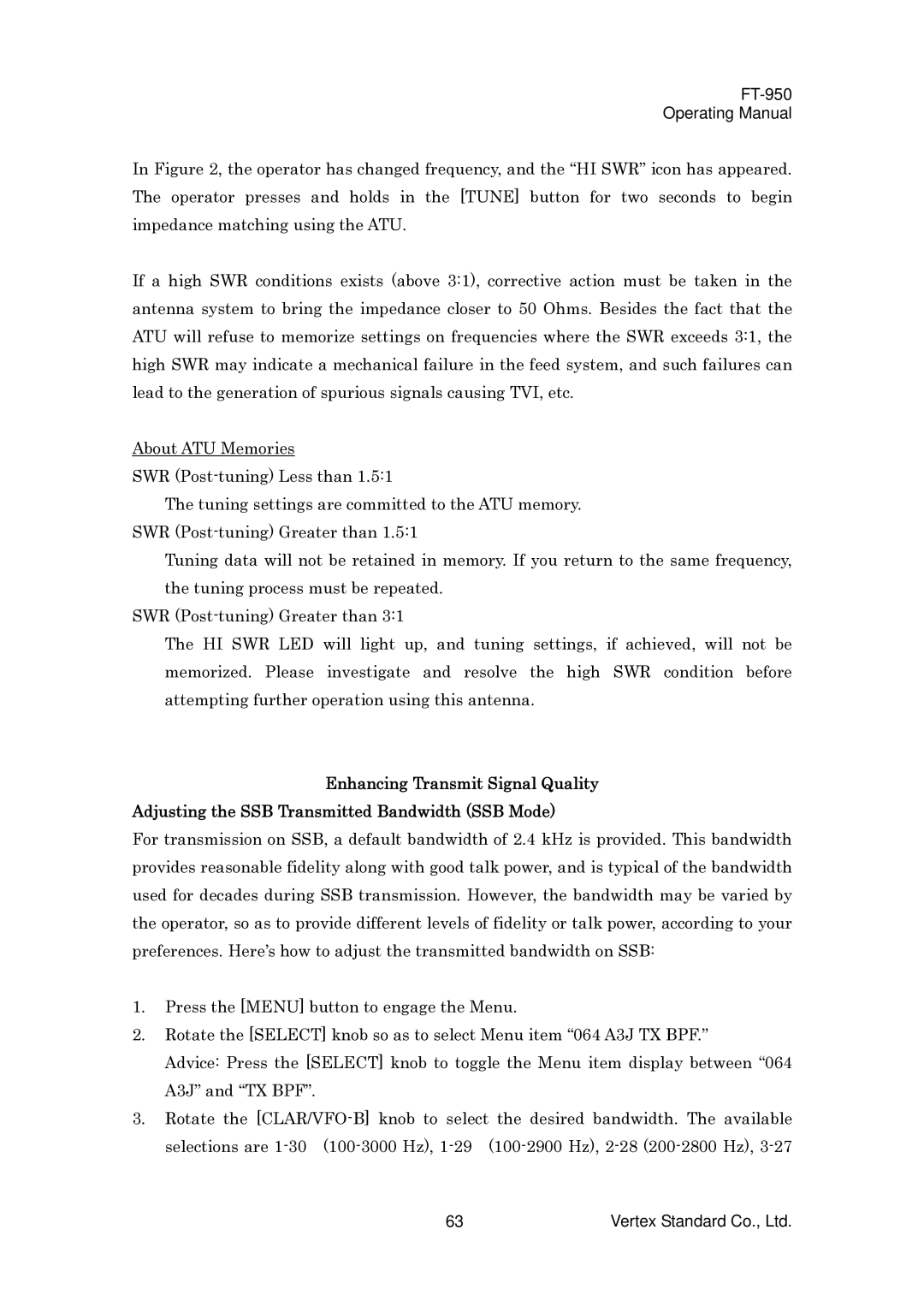FT-950
Operating Manual
In Figure 2, the operator has changed frequency, and the “HI SWR” icon has appeared. The operator presses and holds in the [TUNE] button for two seconds to begin impedance matching using the ATU.
If a high SWR conditions exists (above 3:1), corrective action must be taken in the antenna system to bring the impedance closer to 50 Ohms. Besides the fact that the ATU will refuse to memorize settings on frequencies where the SWR exceeds 3:1, the high SWR may indicate a mechanical failure in the feed system, and such failures can lead to the generation of spurious signals causing TVI, etc.
About ATU Memories
SWR
The tuning settings are committed to the ATU memory. SWR
Tuning data will not be retained in memory. If you return to the same frequency, the tuning process must be repeated.
SWR
The HI SWR LED will light up, and tuning settings, if achieved, will not be memorized. Please investigate and resolve the high SWR condition before attempting further operation using this antenna.
Enhancing Transmit Signal Quality
Adjusting the SSB Transmitted Bandwidth (SSB Mode)
For transmission on SSB, a default bandwidth of 2.4 kHz is provided. This bandwidth provides reasonable fidelity along with good talk power, and is typical of the bandwidth used for decades during SSB transmission. However, the bandwidth may be varied by the operator, so as to provide different levels of fidelity or talk power, according to your preferences. Here’s how to adjust the transmitted bandwidth on SSB:
1.Press the [MENU] button to engage the Menu.
2.Rotate the [SELECT] knob so as to select Menu item “064 A3J TX BPF.”
Advice: Press the [SELECT] knob to toggle the Menu item display between “064 A3J” and “TX BPF”.
3.Rotate the
selections are |
|
63 | Vertex Standard Co., Ltd. |
